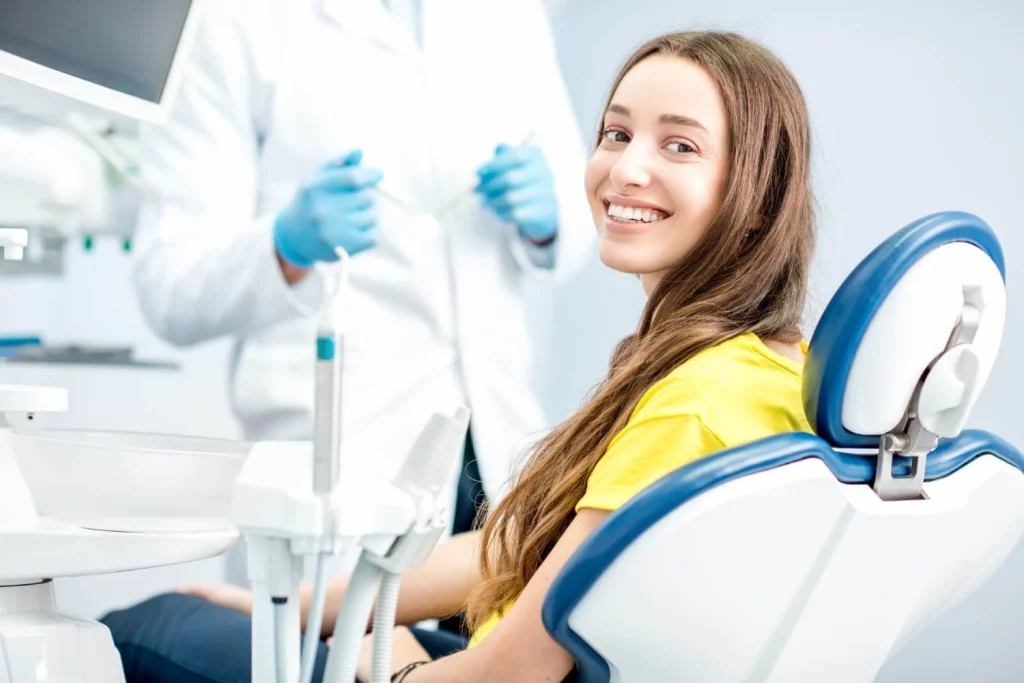Automating inventory management in orthodontic practices presents a strategic opportunity to enhance operational efficiency. By minimizing manual tracking errors and ensuring essential supplies are consistently available, practices can markedly improve workflow. This shift not only reduces potential disruptions but also allows staff to concentrate on patient care. As practices consider implementing such systems, understanding the key features and benefits becomes vital for successful integration. The implications of these changes warrant further exploration.
Key Takeaways
- Automated inventory systems provide real-time tracking, ensuring essential supplies are always available without manual errors.
- Streamlined ordering processes reduce overstocking and stockouts, maintaining consistent workflow and minimizing disruptions.
- Integration with practice management software enhances data accuracy, fostering better decision-making and resource allocation.
- Staff can focus more on patient care rather than time-consuming inventory tasks, improving overall patient satisfaction.
- Regular reviews and KPIs enable continuous improvement, optimizing operational efficiency and reducing costs associated with inventory management.
The Importance of Efficient Inventory Management in Orthodontics
Efficient inventory management serves as a cornerstone for the operational success of orthodontic practices. By ensuring that essential supplies, from braces to dental tools, are consistently available, practices can minimize disruptions and maintain a seamless workflow. A well-organized inventory system not only enhances patient care but also fosters a collaborative environment among staff, where everyone feels empowered to contribute to operational efficiency. Additionally, strategic inventory management aids in cost control, enabling practices to allocate resources more effectively. Ultimately, understanding how to automate orthodontic practice inventory management can greatly elevate overall productivity, allowing orthodontic teams to focus on delivering exceptional patient experiences while enhancing their sense of community and belonging within the practice.
Challenges Faced by Orthodontic Practices Without Automation
Orthodontic practices that operate without automation frequently encounter a myriad of challenges that can hinder their overall efficiency and patient care. Manual inventory management often leads to inaccurate stock counts, resulting in delays and disruptions in treatment. Additionally, the time-consuming nature of tracking supplies can divert staff from patient-focused activities, diminishing the overall patient experience. Inefficient ordering processes may cause overstocking or stockouts, thereby increasing operational costs. Moreover, without real-time data analysis, practices struggle to identify trends in usage, making it difficult to optimize purchasing decisions. Ultimately, these challenges can create an environment where patient satisfaction suffers, and the practice’s growth potential is stifled, underscoring the importance of understanding how to automate orthodontic practice effectively.

Key Features of an Automated Inventory Management System
An effective automated inventory management system serves as a cornerstone for enhancing operations within orthodontic practices. Key features of such a system include real-time tracking of supplies, which guarantees that practitioners always have the necessary materials on hand. In addition, automated reordering processes help maintain ideal stock levels, minimizing disruptions to patient care. Integration with practice management software enhances data accuracy, allowing for streamlined reporting and analysis. User-friendly interfaces promote ease of use among staff, fostering a collaborative environment. Moreover, robust security measures protect sensitive inventory data, ensuring compliance with regulations. By incorporating these features, orthodontic practices can transform their workflow, ultimately improving efficiency and enhancing the overall patient experience while learning how to automate orthodontic practice effectively.
Steps on How to Automate Your Orthodontic Practice
As practices look to enhance their operational efficiency, understanding the steps on how to automate orthodontic practice becomes vital. First, conducting a thorough assessment of current inventory processes allows practices to identify areas needing improvement. Next, selecting a robust automated inventory management system tailored to specific needs is essential. Following this, training staff on the new system fosters a culture of adaptability and teamwork. Implementing real-time tracking features guarantees accurate inventory levels, reducing manual errors. Finally, establishing regular reviews of the automated system helps maintain peak performance and address any emerging challenges. By meticulously following these steps, orthodontic practices can effectively streamline operations, promote collaboration, and ultimately enhance patient care through improved workflow.
Measuring the Impact of Automation on Workflow and Productivity
While the integration of automation in inventory management presents numerous advantages, measuring its impact on workflow and productivity is essential for orthodontic practices seeking to optimize their operations. A strategic approach to assessment can reveal insights that drive continuous improvement. Key performance indicators (KPIs) to evaluate include:
- Time Savings: Evaluate reductions in time spent on inventory-related tasks.
- Error Reduction: Monitor decreases in stock discrepancies and order inaccuracies.
- Cost Efficiency: Analyze changes in operational costs associated with inventory management.
- Staff Satisfaction: Gauge employee feedback on workflow improvements and reduced manual tasks.
Frequently Asked Questions
What Is the Cost of Implementing Automated Inventory Management?
The cost of implementing automated inventory management varies greatly, depending on system complexity, software choices, and integration needs. Practices must evaluate initial expenses alongside potential long-term savings to determine overall financial feasibility and return on investment.
How Long Does It Take to Set up an Automated System?
Setting up an automated inventory management system typically requires two to six weeks, depending on the practice’s size and complexity. Thorough planning and training are essential to guarantee a smooth changeover and effective implementation.
Can I Integrate Automation With Existing Software?
Integration of automation with existing software is feasible and beneficial. It allows practices to enhance efficiency without overhauling current systems. Strategically aligning new automation tools with existing platforms fosters a seamless workflow and improved operational synergy.
What Training Is Required for Staff on Automation?
Training staff on automation requires extensive workshops, hands-on demonstrations, and ongoing support. Emphasizing user-friendly interfaces fosters confidence, while regular updates and feedback sessions encourage a culture of learning and adaptation within the orthodontic practice.
Are There Specific Brands Recommended for Orthodontic Inventory Management?
When considering orthodontic inventory management, brands like Ortho2, EasyRx, and Dolphin Imaging are often recommended. These systems enhance efficiency, streamline processes, and support practices in adopting best inventory management practices, ensuring a smoother workflow and improved patient care.
Conclusion
To summarize, automating inventory management in orthodontic practices presents a strategic opportunity to enhance overall workflow and productivity. By addressing common challenges such as stock shortages and manual errors, practices can foster a more efficient environment that prioritizes patient care. The implementation of an automated system not only streamlines inventory processes but also contributes to improved team collaboration and patient satisfaction. Ultimately, this investment in technology supports sustainable practice growth and operational excellence.
You May Also Like To Read:

